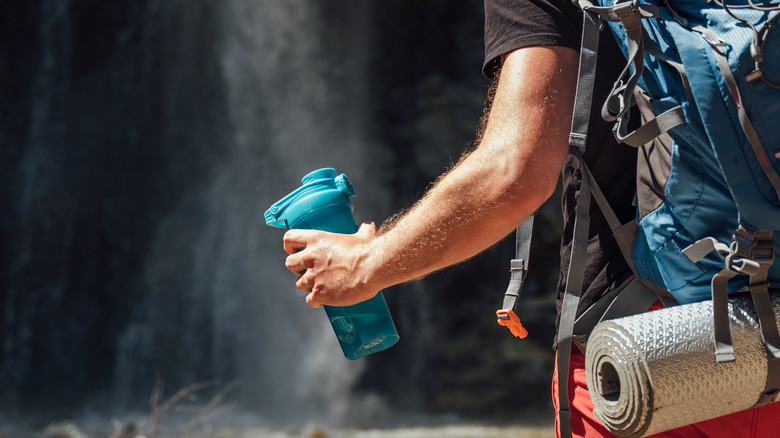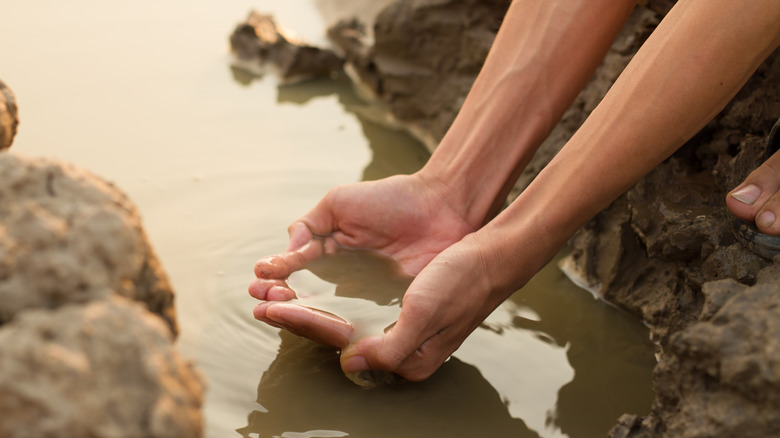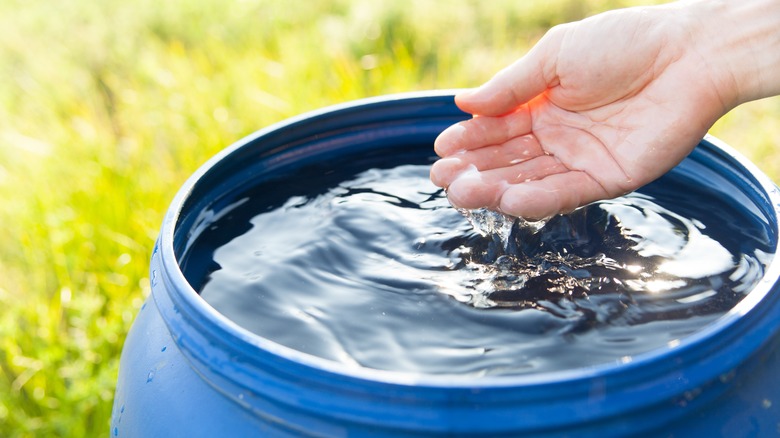What's The Best Water To Drink In The Wild If You Don't Have A Purification System?
Water is essential for the function of the human body and most people can only survive for around three days without water depending on health and other factors, per Medical News Today. Because of this, if you ever experience an emergency or get lost while in remote wilderness, water is often the first problem you need to solve. The best option would be to have a water purification system or purification tablets with you in case of emergencies. However, it often happens that no one is fully prepared for an emergency. So, what should you do if you are ever lost or stranded in the wilderness without a water purification system?
The answer is that you should try and find the cleanest water possible and disinfect it as best as you can. As pointed out by the National Park Service, drinking unpurified water from a natural source is never a good idea because, even if it looks clean, there is no possible way to tell if it is actually clean without advanced testing equipment. In fact, any water found in the wild may contain bacteria and parasites that can make you sick. While some waterborne illnesses don't cause symptoms for days, others can start wreaking havoc on your digestive system within hours and cause you to become dangerously dehydrated, thereby worsening your chances of survival.
How to purify water in the wild
The good news is that even if you don't have a water purification system with you, you can still clean your water in other ways and make it as safe as possible for you to consume. When choosing a wild water source, fast-flowing water from rivers and streams is likely the safest. The closer to the source, the better. If there are no rivers or streams around you can opt for lakes and ponds. Once you've found a suitable source, you should try and follow it upstream and explore the area to check for any contaminants (like dead animals) in or near the water.
After finding water, the next step is to filter it. Research has shown that pouring untreated water through cotton cloth can filter out sediment and certain pathogens like cholera. After filtering, the CDC recommends that you kill any remaining bacteria and parasites by boiling the water for at least one minute. If you can't boil the water, you can also try to kill the remaining microorganisms with sunlight. If it is hot and sunny, leave your water sitting in a bottle on its side in direct sunlight for six hours. If cloudy, you will need to let the water sit in the sun for two days to disinfect it.
Other ways to get water
While taking water from a flowing stream or river and then filtering and boiling it is a good option, if you are in a dry climate (or simply can't find a water source) it may not be viable. In this situation, the safest possible water would be rainwater. Of course, collecting rainwater requires being in the right place at the right time.
If luck is not on your side, another method is to collect water from green leafy plants. For this method, the most important thing is to make sure the plant you are getting water from is not poisonous. You should only choose plants you can easily identify like maple trees. To collect the water, wrap a small bunch of green leaves (still attached to the plant or tree) in a clear plastic bag and tie it tightly. As the bag sits in the sun and the temperature inside rises, the leaves will begin to release water which will be collected inside the bag.


